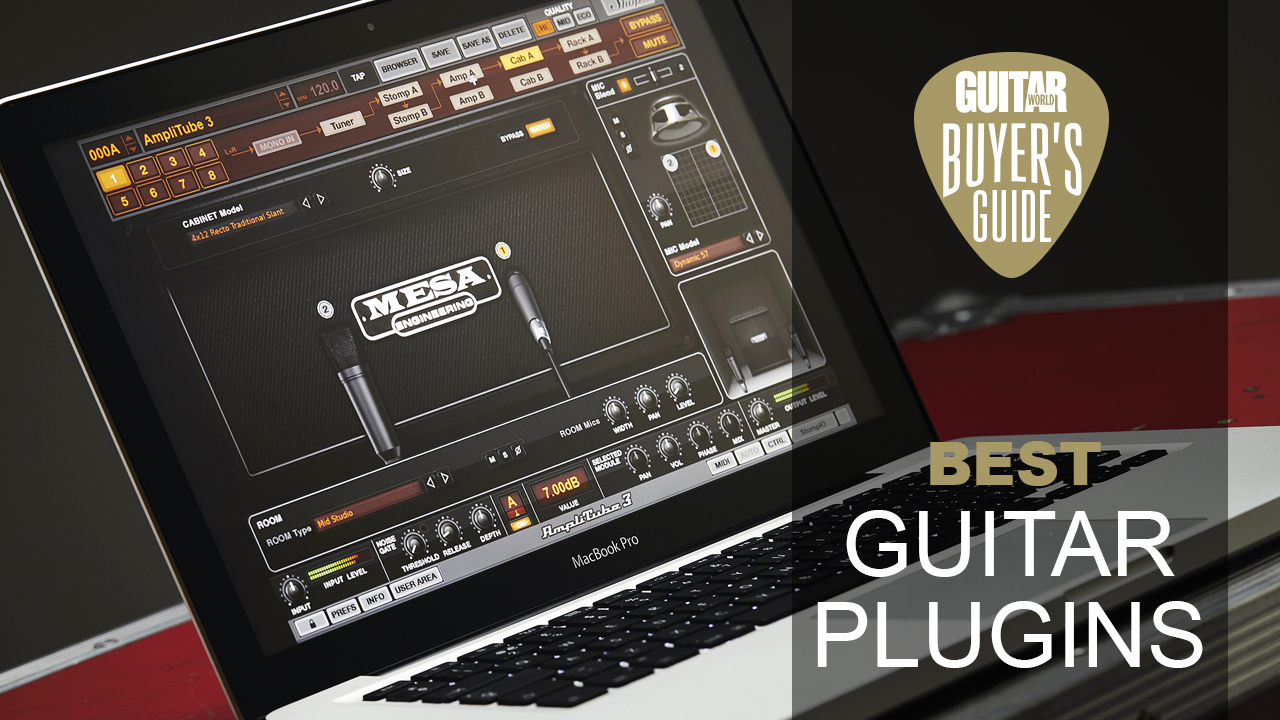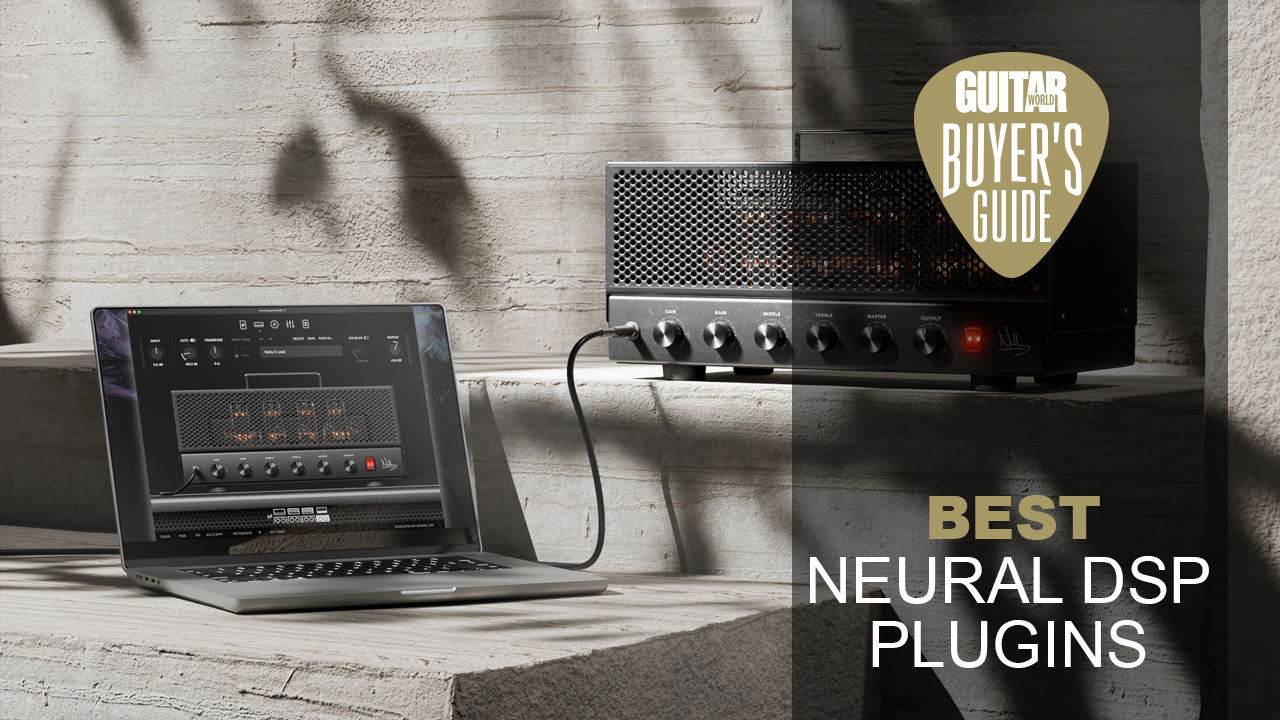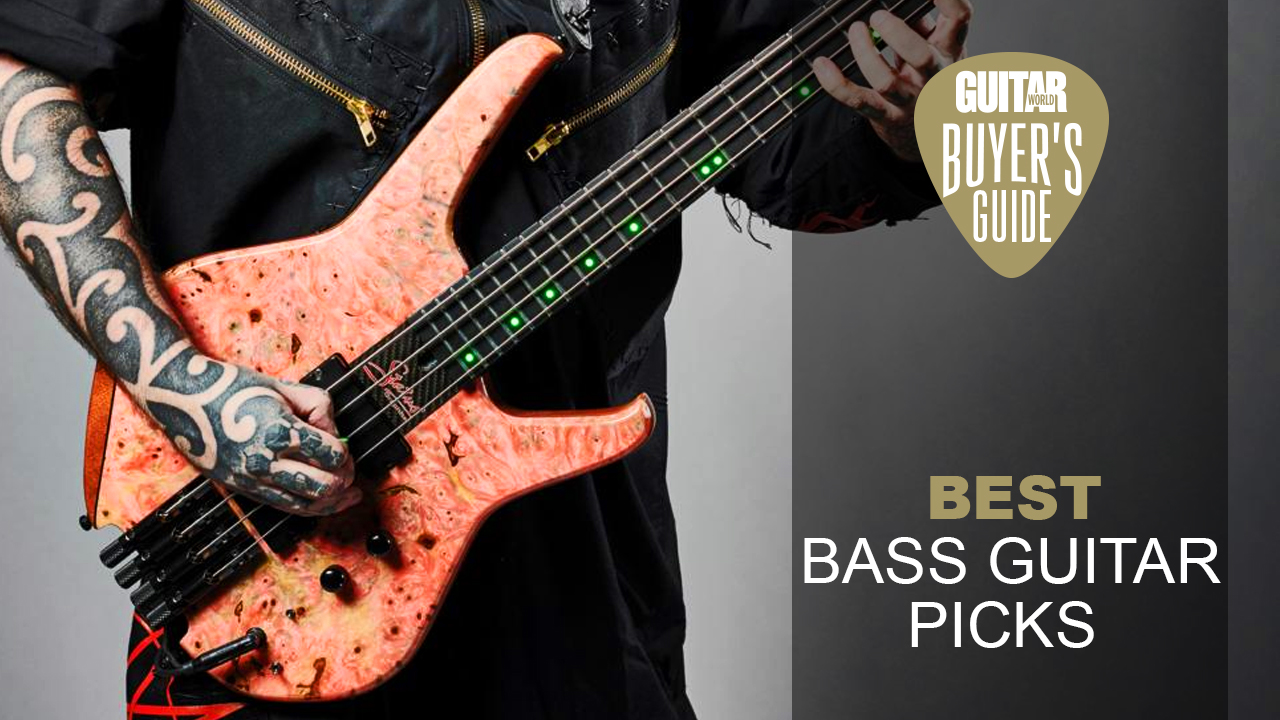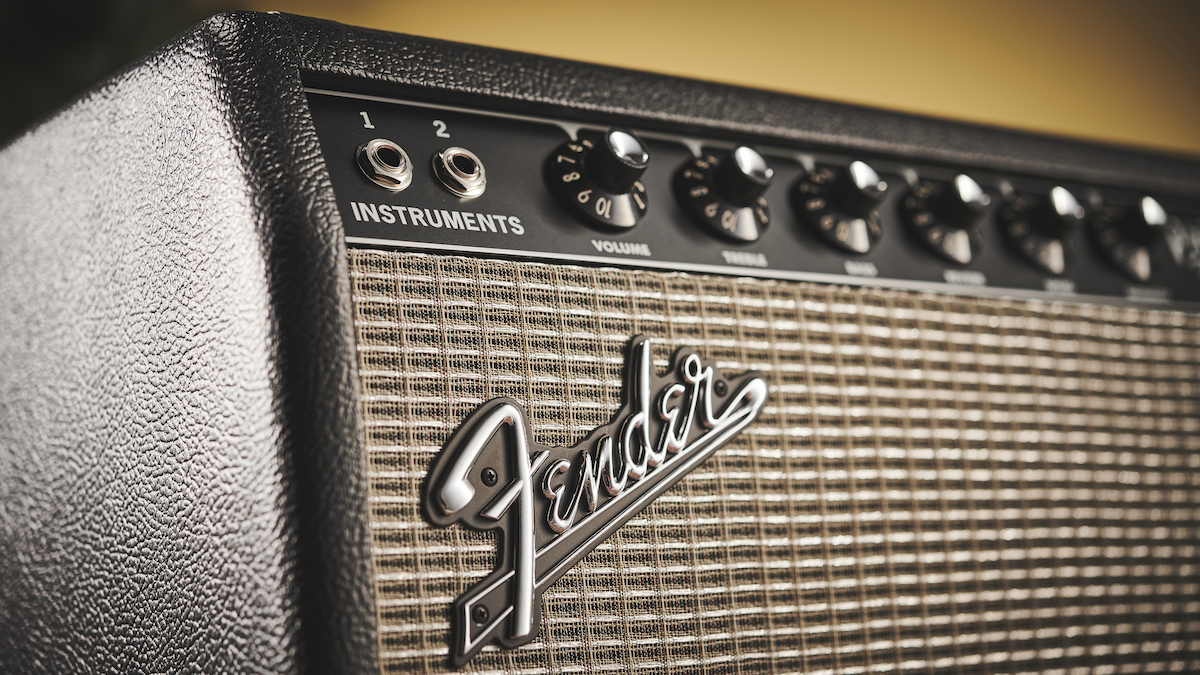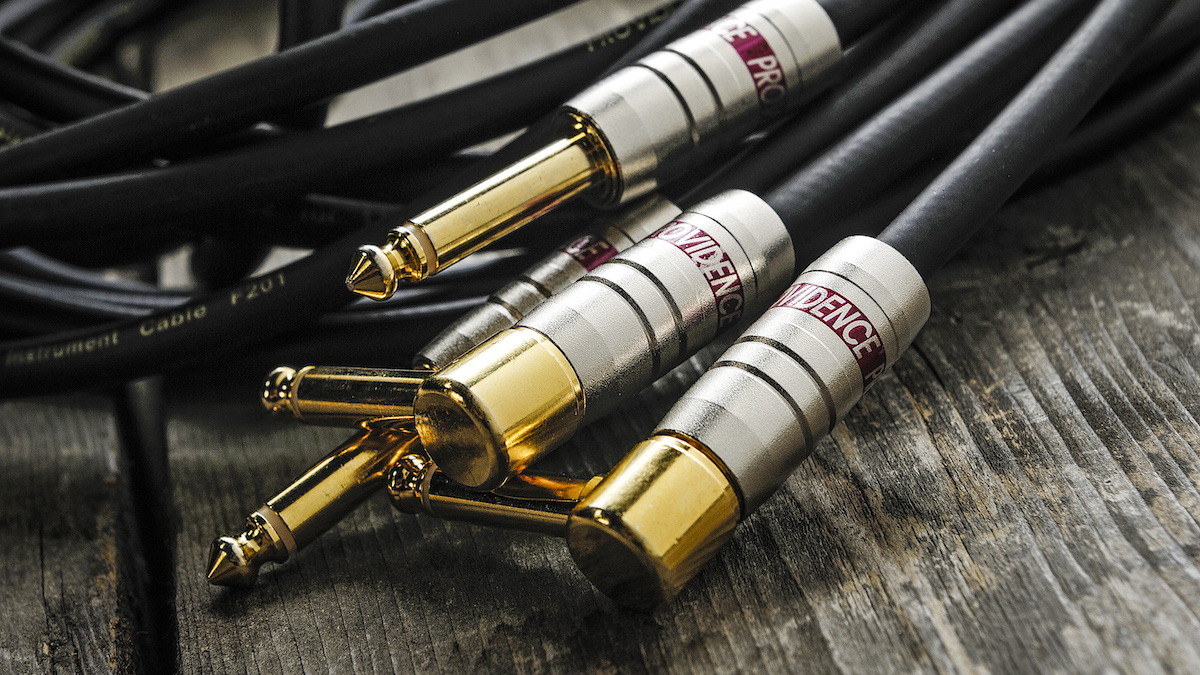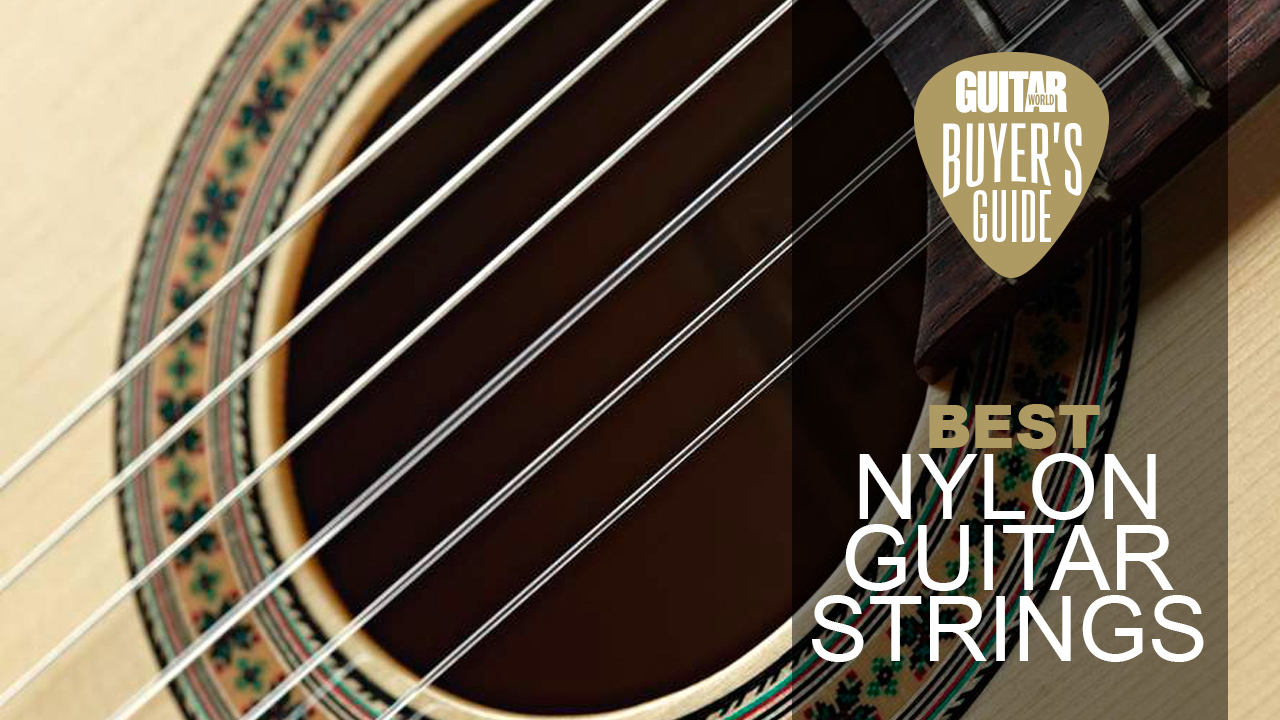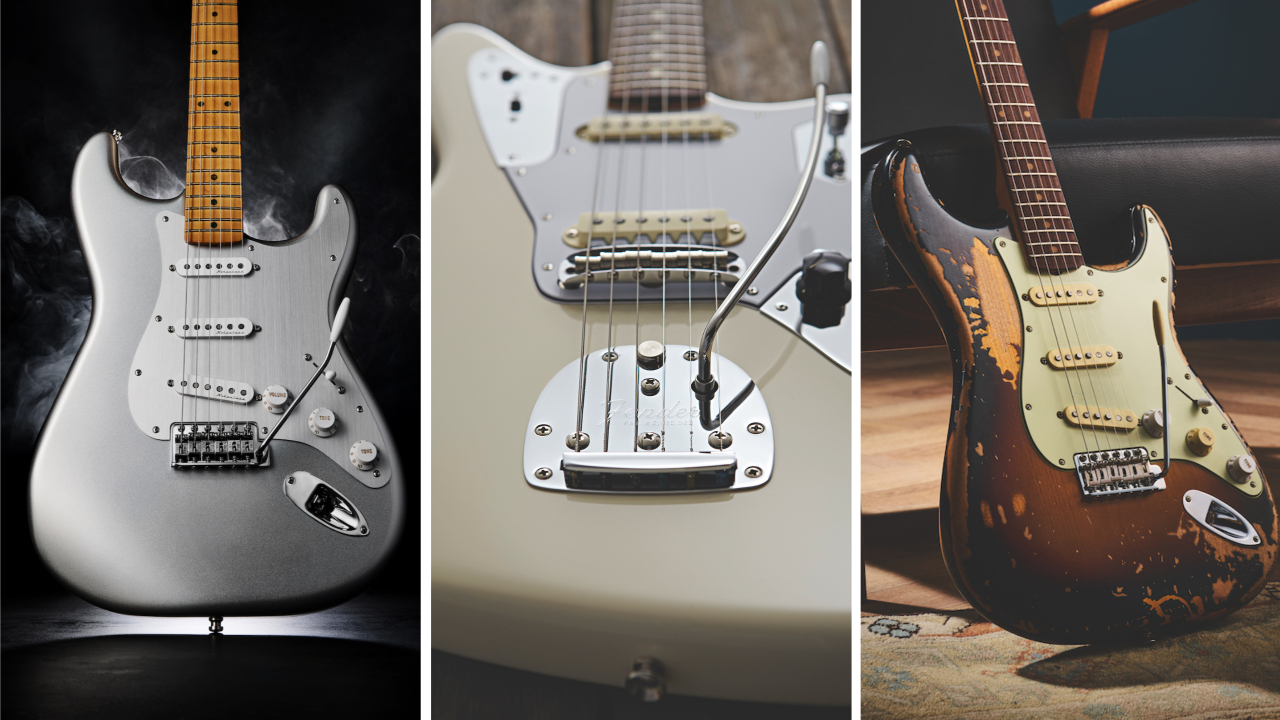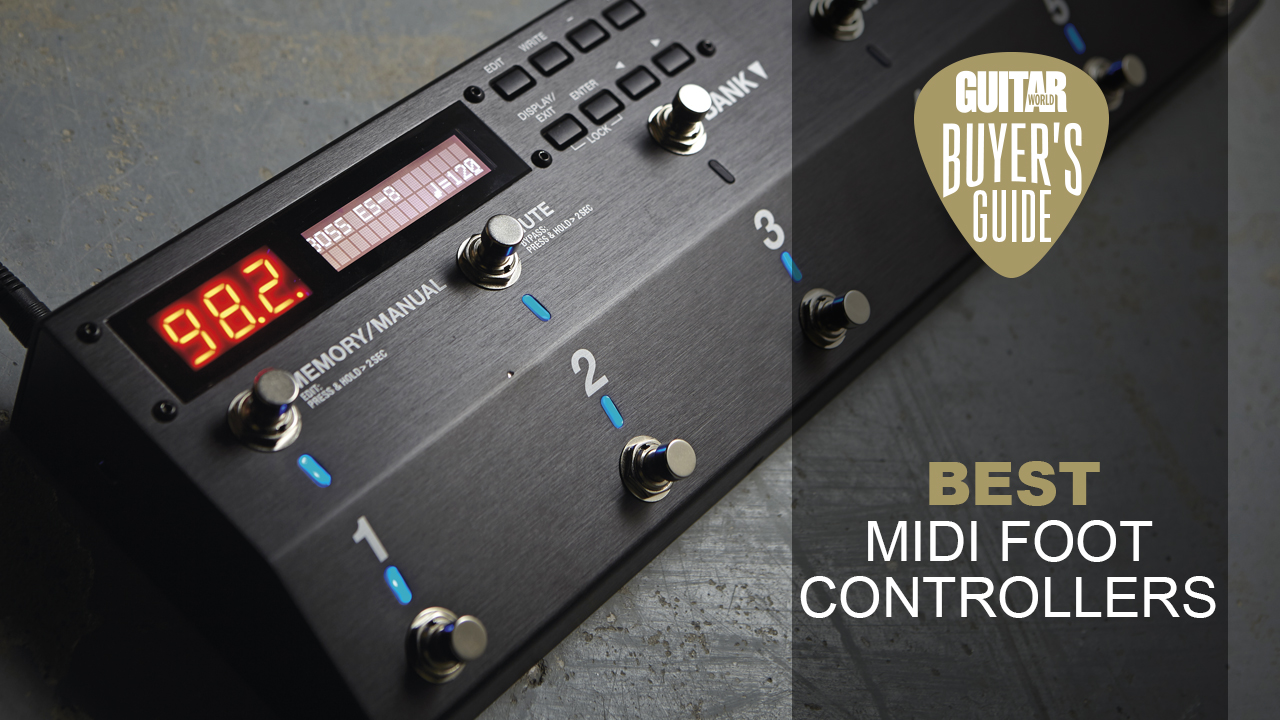Best bass guitars for rock 2025: rock 'n' roll basses from Fender, MusicMan, Sire and more
Make your low-end roar with the best rock bass guitars for every budget
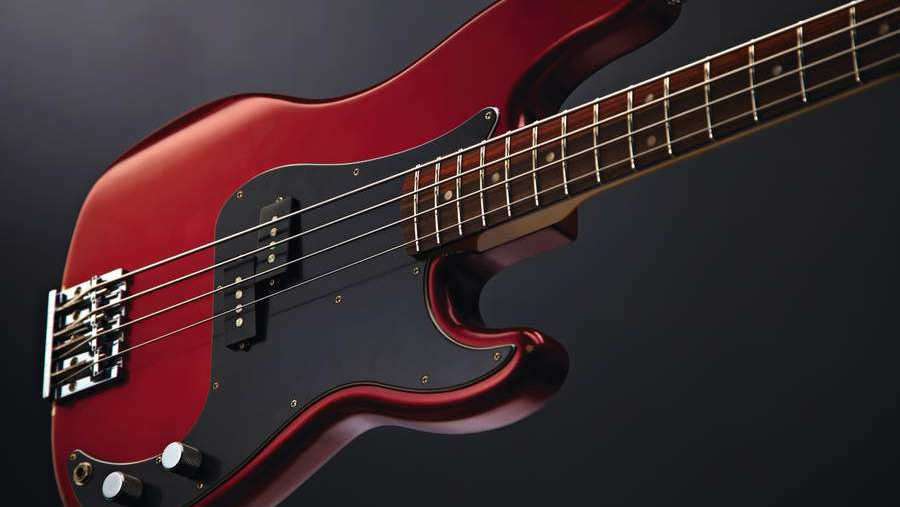
1. Quick list
2. Best overall
3. Best with humbuckers
4. Best short-scale
5. Best for vintage tones
6. Best for beginners
7. Best under $1K
8. Best Fender alternative
9. Best modern bass
10. Best on a budget
11. Best for guitarists
12. Buying advice
13. How we choose
When imagining the classic rock band lineup, it’s impossible not to think about the bass guitar. It’s synonymous with the genre, and for good reason. The electric bass guitar arrived at the dawn of rock 'n’ roll and has been integral ever since – and we've hand-selected what we believe are the bass guitars for rock right now so you can get in on the action.
Not all bass guitars are optimized for rock though, with some more suited to jazz, funk, or metal. However, there are two clear things that the best bass guitars for rock should do: provide definition to cut through a busy mix that's often dominated by electric guitars and produce enough low end to totally fill a room. Now, there is a little more nuance to it than that, but if a bass can do those two things, it’s well on the way to becoming a perfect rock bass guitar.
For those who are just starting out in the world of bass guitars and are looking for a companion on their journey to the land of rock ‘n’ roll, or for those searching for the very best rock bass at any price point, the instruments on our list will help you find the best bass guitar for rock.
Quick list
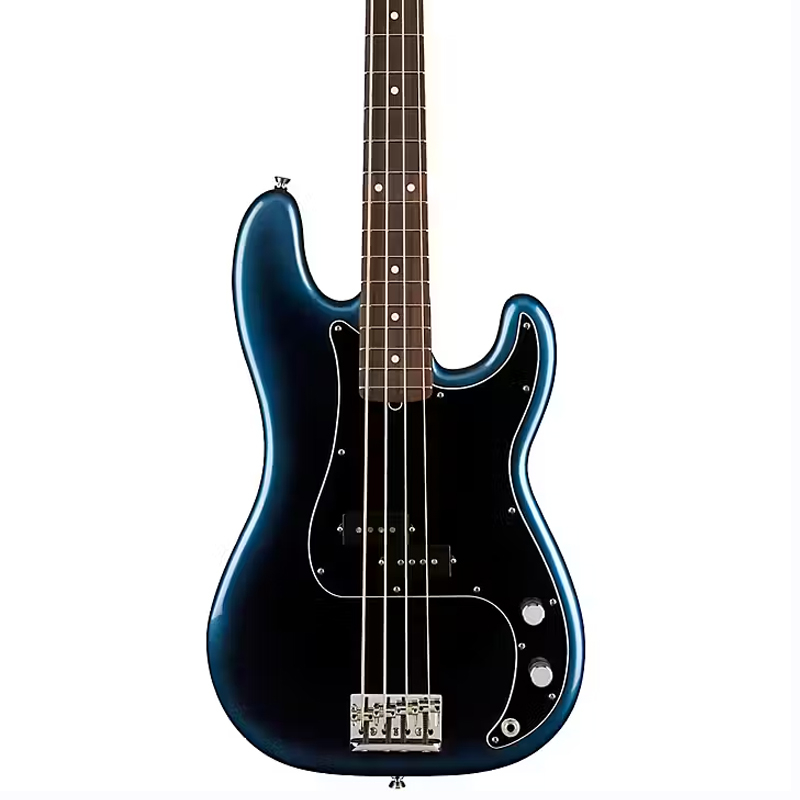
You’d be forgiven for thinking that Fender could have let things slip after more than 70 years of the Precision Bass, but it most certainly hasn’t. Among the latest in Fender’s American-manufactured precision basses, the American Professional II has kept the recipe largely the same since it first rocked and rolled in the ’50s, but it's been refined wherever possible.
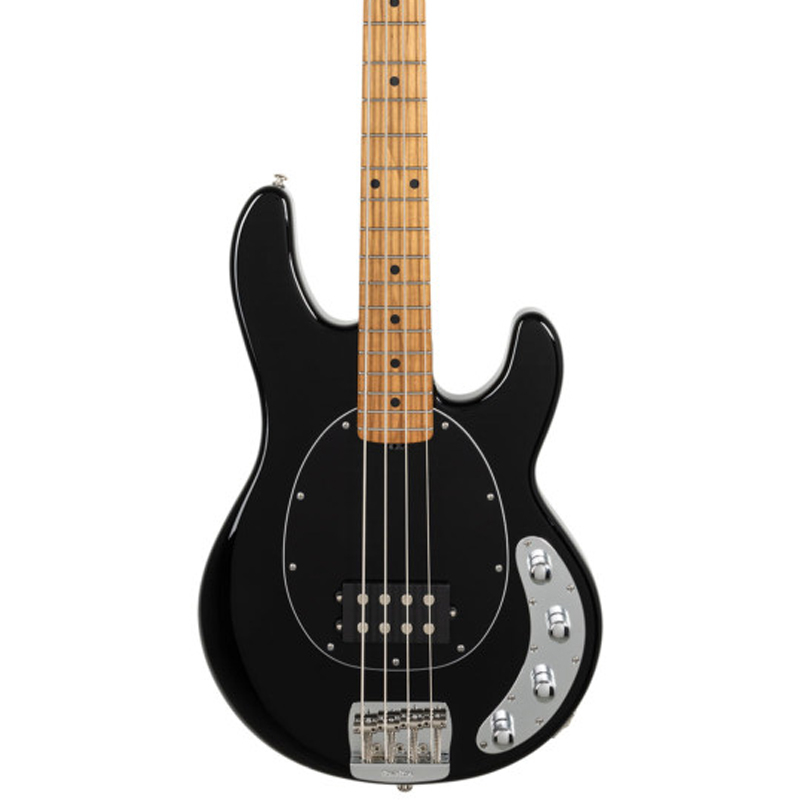
There are a handful of truly iconic rock bass guitars, and the StingRay is among them. Holding the mantle of the first bass guitar to feature an on-board active EQ, the StingRay took rock bass to a new level of flexibility, becoming the choice of the creative and virtuoso. This is in no small part due to its exceptional playability, which has endured to this day.
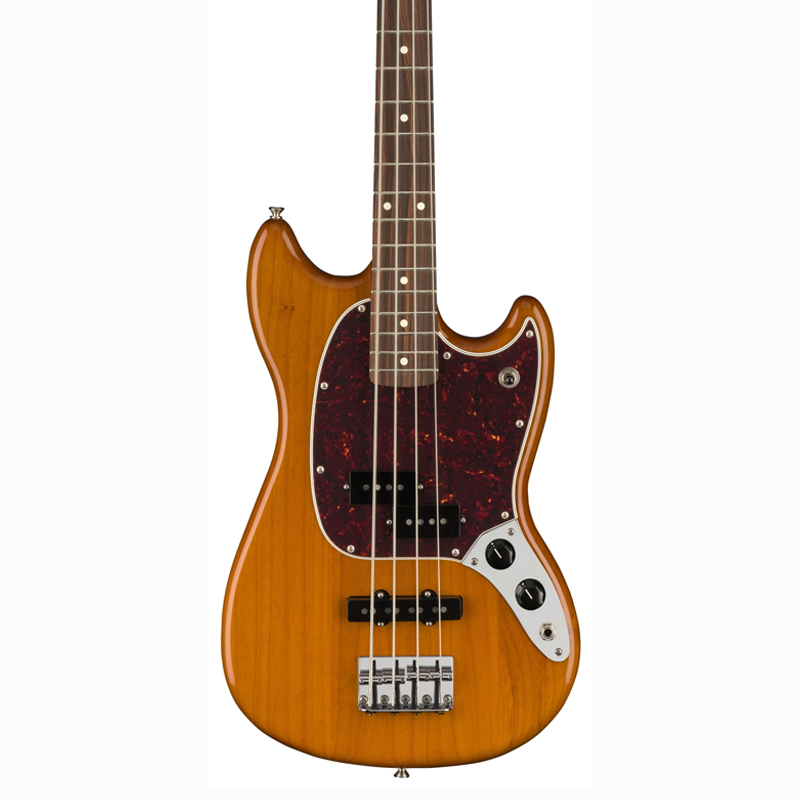
Short-scale basses such as the Mustang have become increasingly popular in recent years, particularly for those who have come from an electric-guitar-first background, as the scale length feels a bit closer to a standard electric guitar. The Player Mustang’s scale might be short, but it isn’t short on tone.
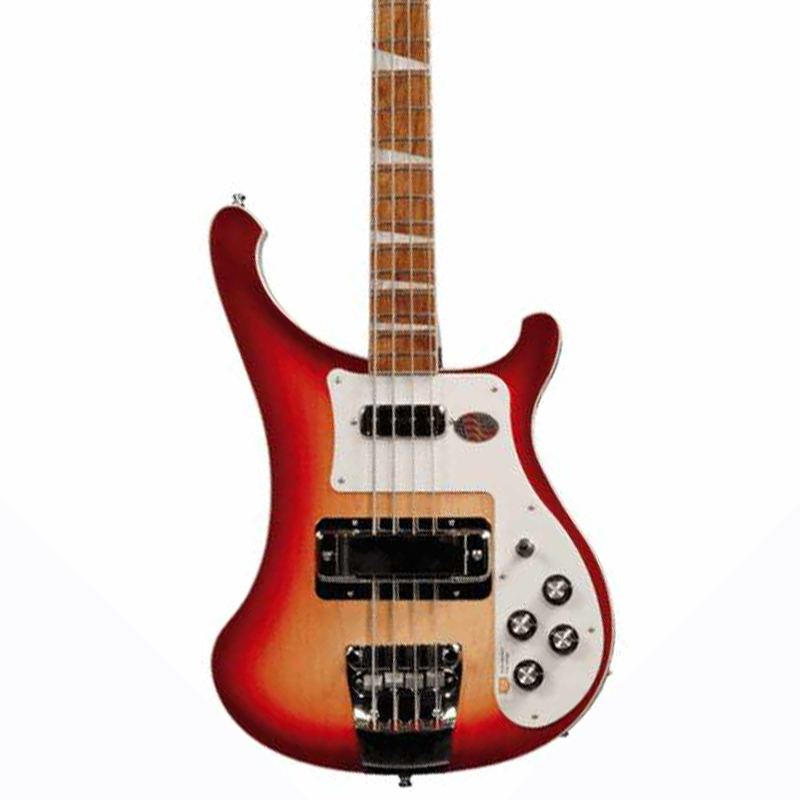
Independent tone and volume controls, with a 3-way switch for the pair of Rickenbacker single coil pickups, mean you have superb control over your sound, allowing you to roll the tone knob back and achieve laid back grooves, or crank everything up to ten and rip walls down.
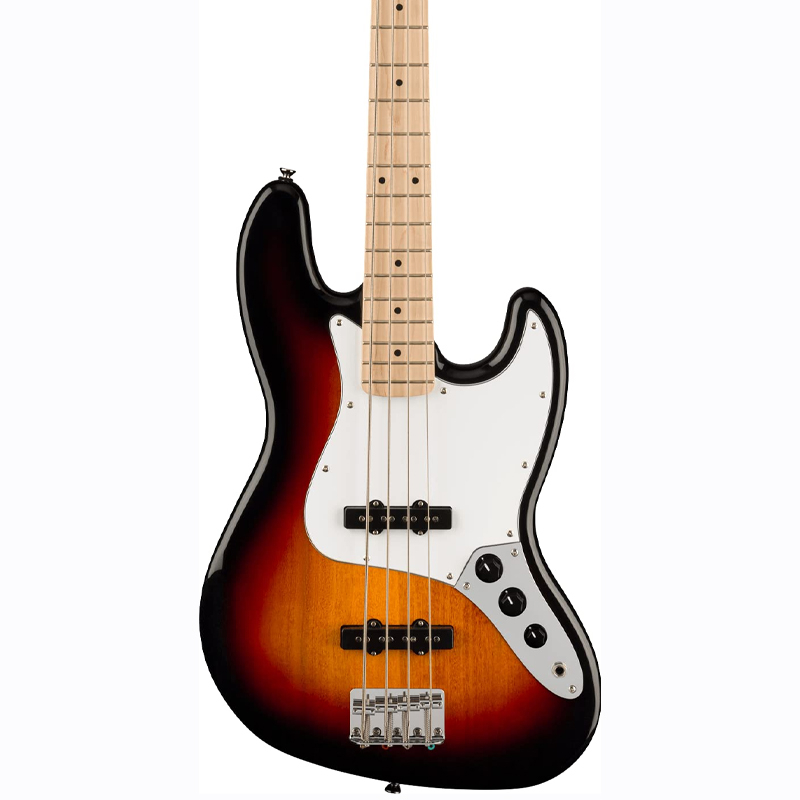
Despite the Affinity J Bass coming in at a modest price point and lacking in frills, its classic Fender look means it still dazzles, and if you were to have a graph of its sound quality versus price measured against comparably priced basses, it’d be off the charts. As can be expected of a Fender-family Jazz bass, its impressive versatility makes it a great instrument for a player looking for something that can do it all.

The Thunderbird may well be Gibson’s most iconic bass instrument ever and has been a mainstay in their catalog since launch, however they also come with a hefty Gibson price tag. As is so often the case, Epiphone have come to the rescue of those looking to get their hands on one of Gibson’s legendary shapes at a fraction of the price.
Load the next 4 products ↓
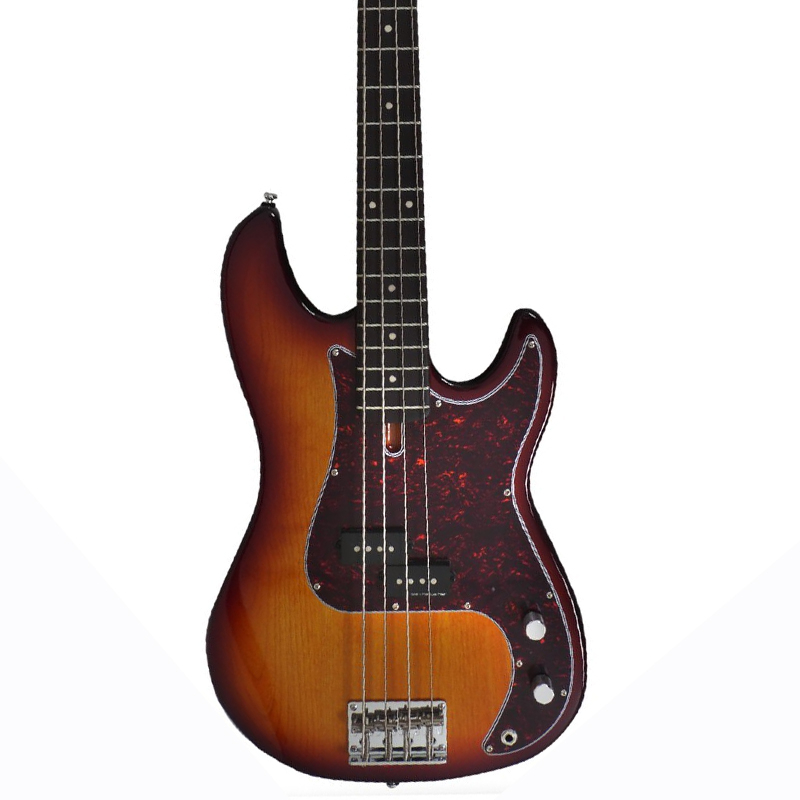
Sire has earned a name for itself for crafting bass guitars with classic looks and great tone, at a near-unbeatable price point. They’re also great for accessibility, catering for both 4 and 5-string players, as well as those who are left-handed, all of which are available on their brilliant P5R model.
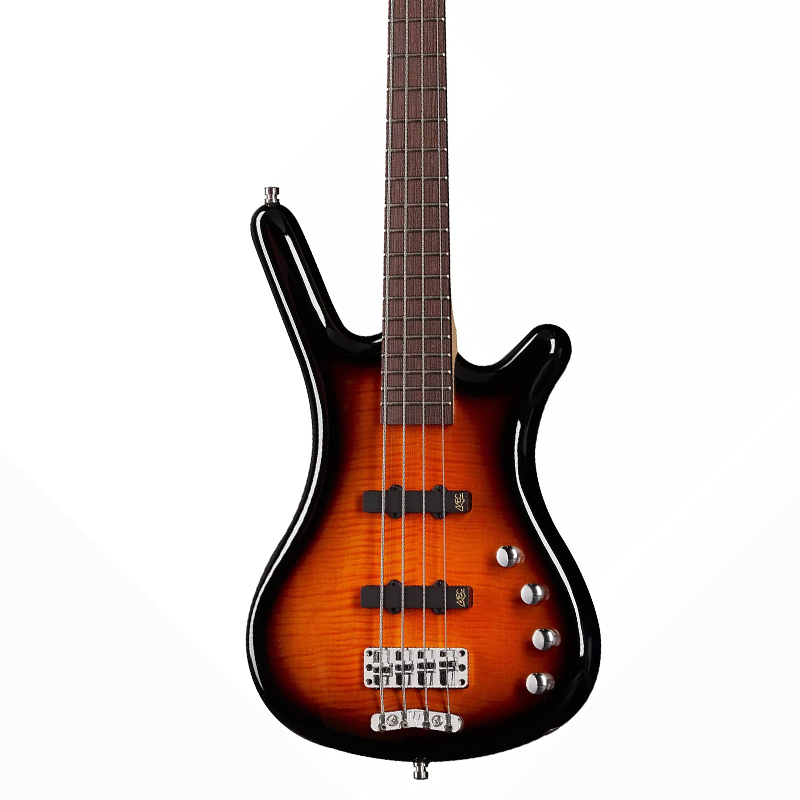
Warwick is synonymous with producing high-end, modern bass guitars that are loaded with active electronics and are found on stage in the hands of wildly technical players. Its Chinese-made RockBass line offers similarly high standards at an attainable price point.
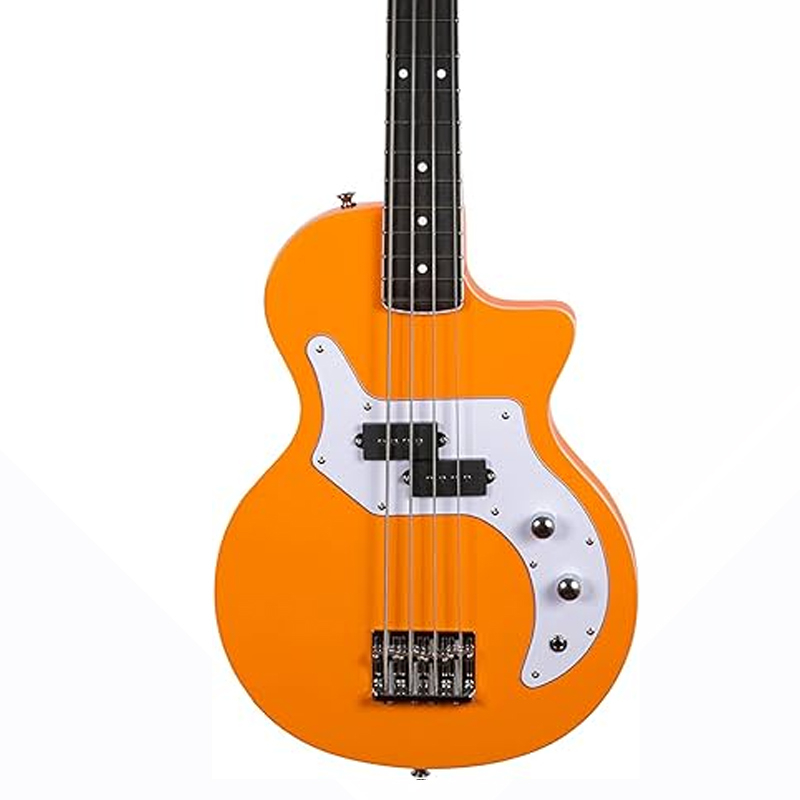
The second iteration of Orange’s O-Bass retains the affordability of its predecessor, and from the outside you’d be forgiven for thinking nothing much had changed at all, barring the headstock now being black. However, Orange has invested in better woods (African okoumé for the body and purpleheart for the fretboard), which make this a far better-balanced instrument .
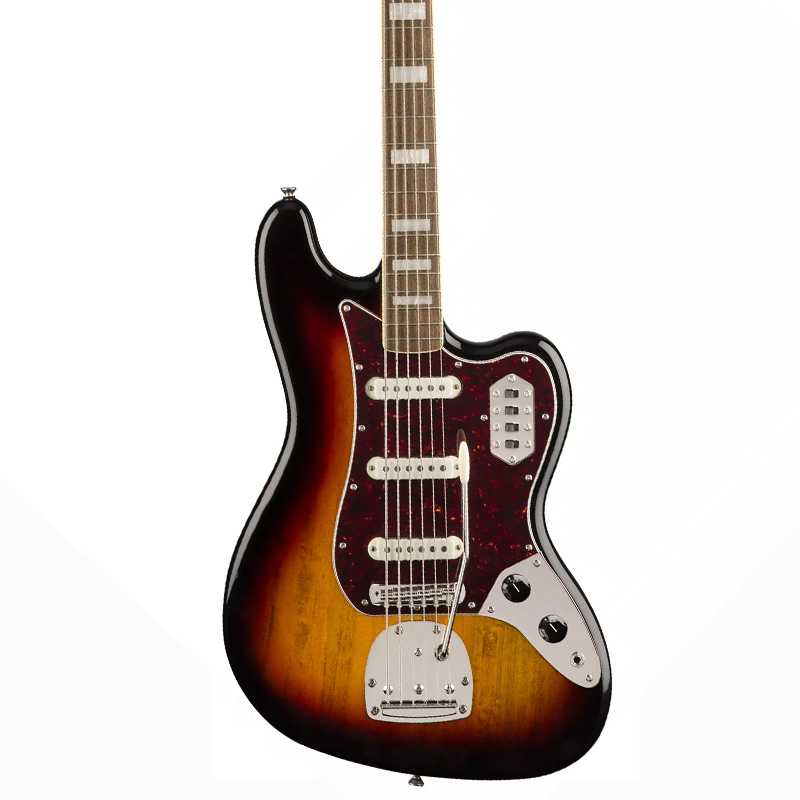
Whether you consider the Classic Vibe Bass VI a true bass guitar or not is up to you, but you’ll find it in the ‘Bass’ section at any music store, so we’re including it here. The Bass VI is a 6-string instrument that is tuned a whole octave down from a traditional electric guitar, so don’t confuse it for a baritone – it offers low-end tones, but with playability closer to a standard electric guitar.
Best rock bass overall
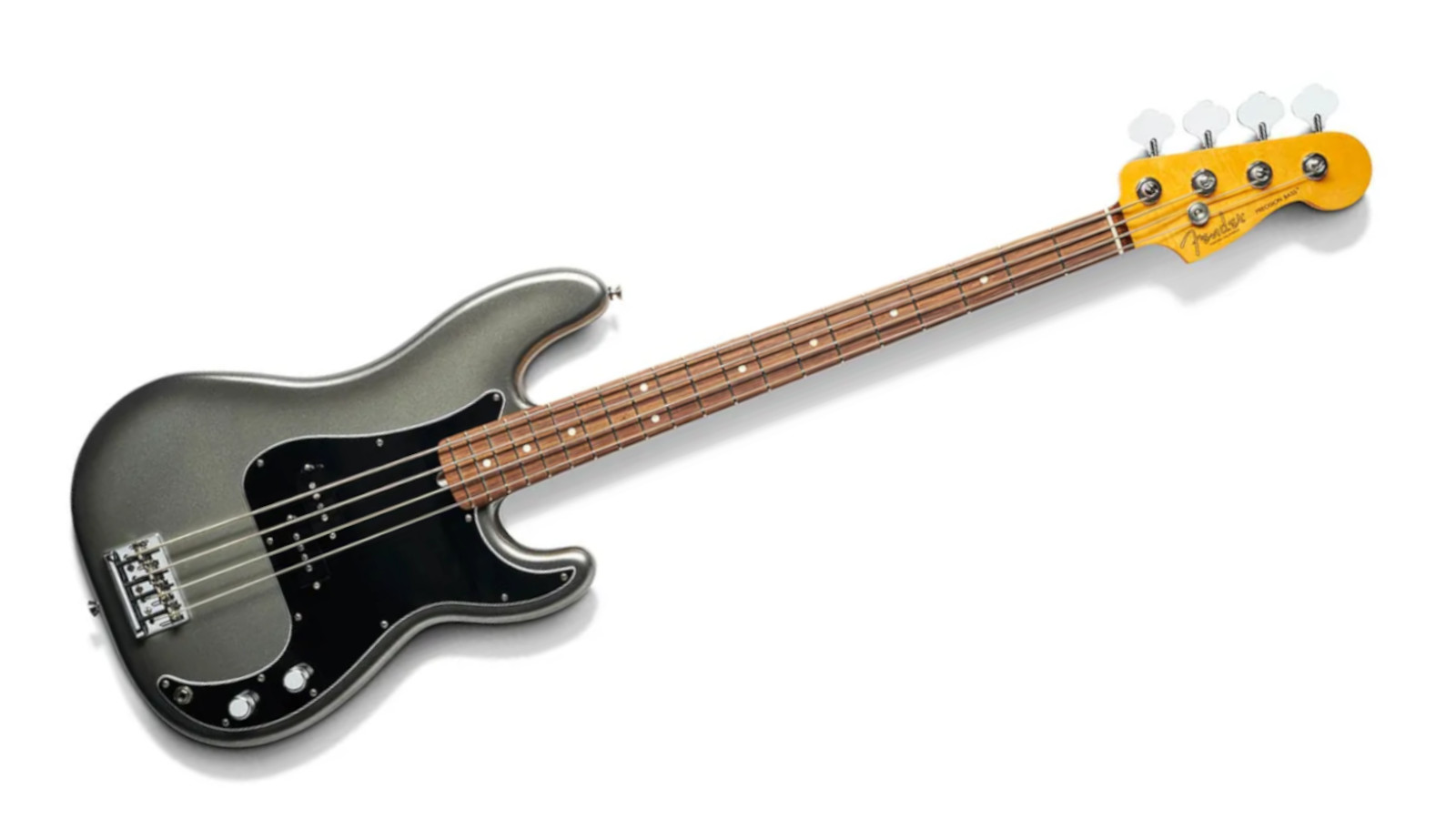
1. Fender American Professional II Precision Bass
Our expert review:
Specifications
Reasons to buy
Reasons to avoid
You’d be forgiven for thinking that Fender could have let things slip after more than 70 years of the Precision Bass, but it most certainly hasn’t. Among the latest in Fender’s American-manufactured precision basses, the American Professional II has kept the recipe largely the same since it first rocked and rolled in the ’50s, but it's been refined wherever possible.
Fender’s V-Mod II split-coil pickup encapsulates classic P-Bass tones with the kind of clarity and punch you need for rock playing, and the sustain from the HiMass bridge helps its player exude musicality.
The playability of this bass is where it stands above the rest, with the ‘63 P Bass neck profile – the holy grail of bass necks – partnered with modern touches such as the sculpted neck heel, making it truly effortless to play. It simply doesn’t get better than this, from Fender’s standard range, for playing rock music.
Best with humbuckers
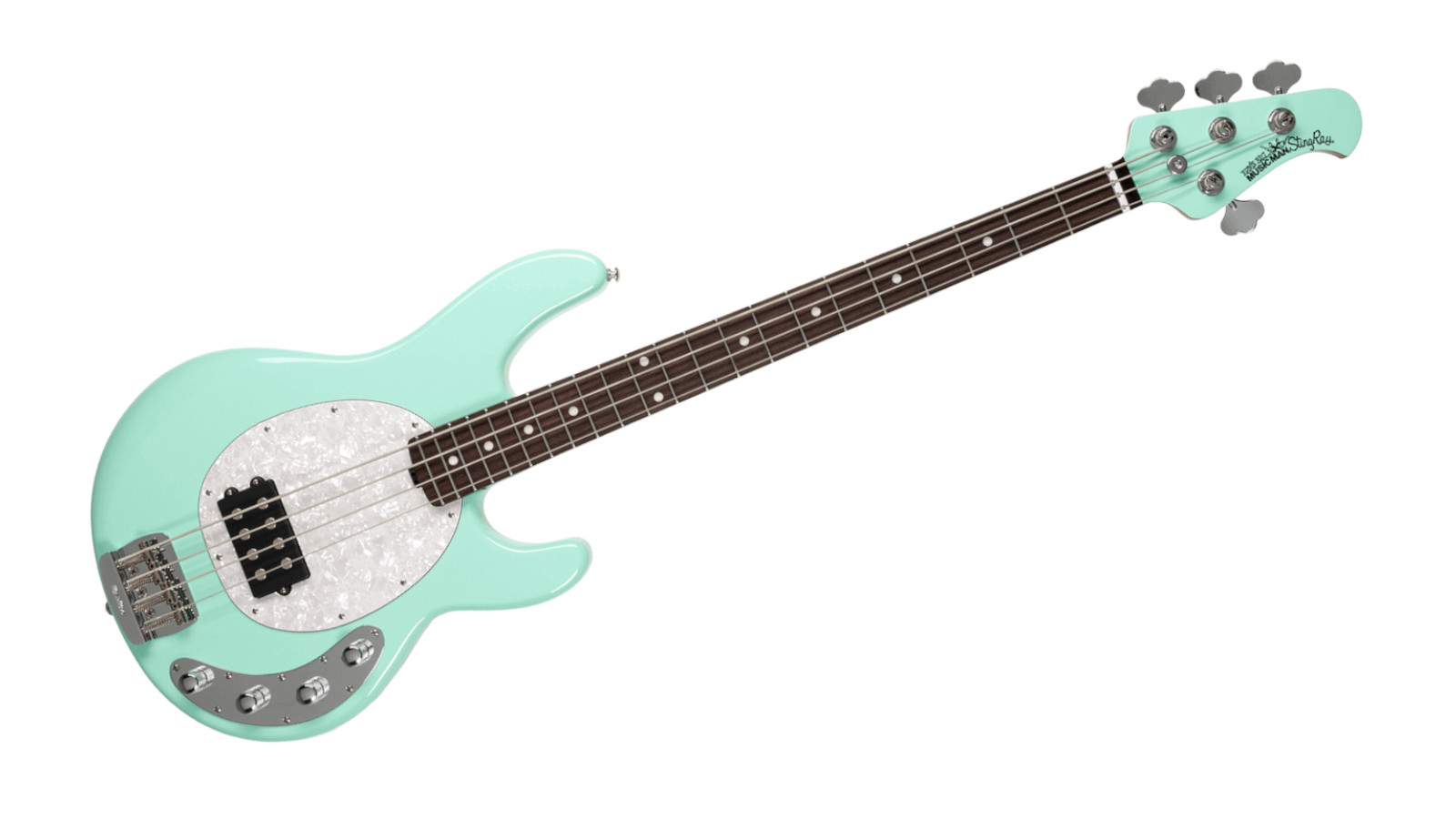
2. MusicMan StingRay Special
Our expert review:
Specifications
Reasons to buy
Reasons to avoid
There are a handful of truly iconic rock bass guitars, and the StingRay is among them. Holding the mantle of the first bass guitar to feature an on-board active EQ, the StingRay took rock bass to a new level of flexibility, becoming the choice of the creative and virtuoso. This is in no small part due to its exceptional playability, which has endured to this day.
The MusicMan neodymium humbucker is one of the greatest pickups in rock bass history and its latest iteration has been tuned to give even more output, which means you can do just about anything on this bass, from crushing hard-rock gain to blues-derived smooth rock.
When you get to this price point, it’s the attention to detail that really sets a bass apart, and with features like the roasted maple neck, stainless steel frets, and rolled fret edges, this bass sits firmly amongst the best that money can buy.
Best short-scale bass
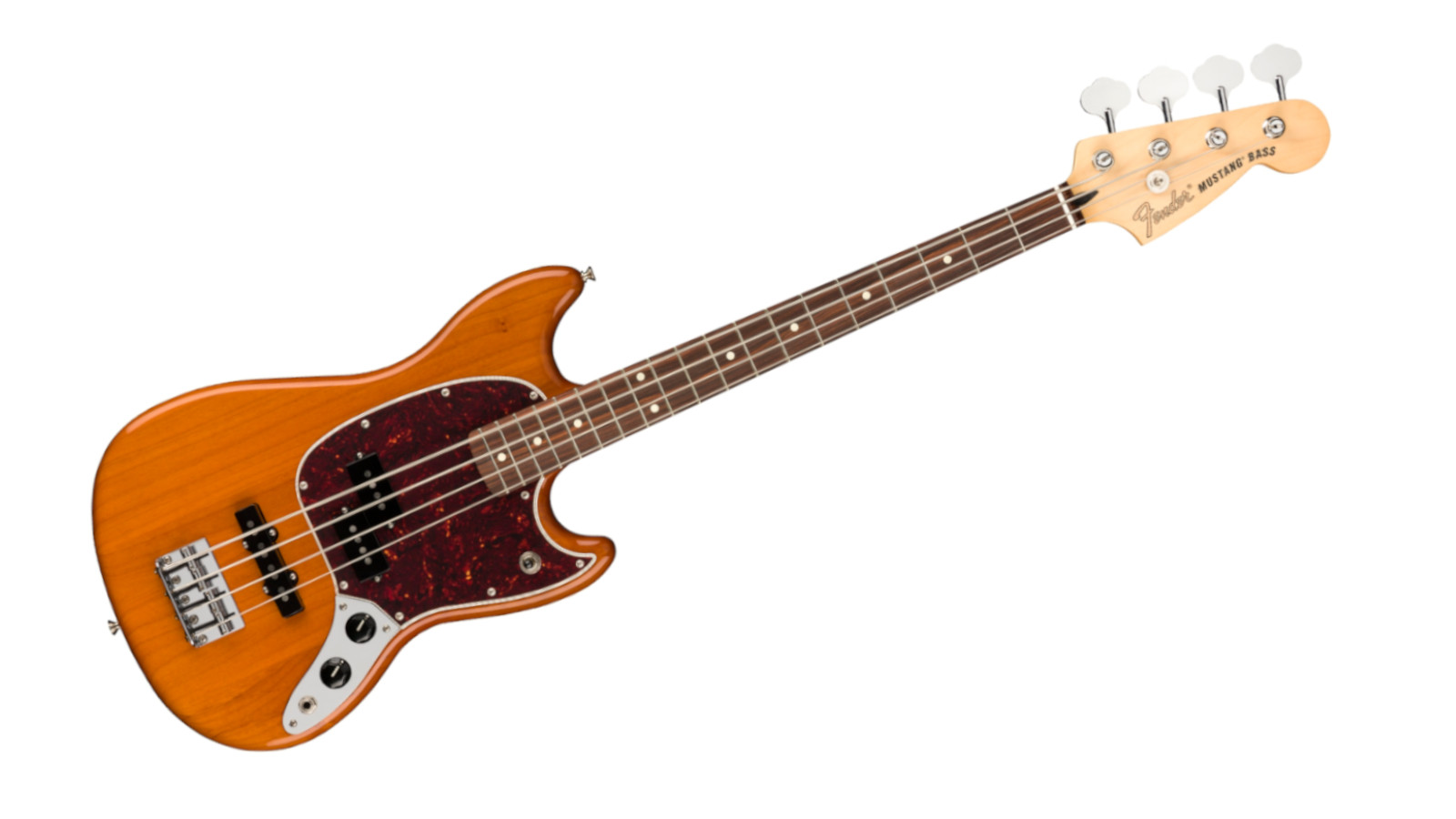
3. Fender Player Mustang Bass – PJ
Our expert review:
Specifications
Reasons to buy
Reasons to avoid
Short-scale basses such as the Mustang have become increasingly popular in recent years, particularly for those who have come from an electric-guitar-first background, as the scale length feels a bit closer to a standard electric guitar. The Player Mustang’s scale might be short, but it isn’t short on tone.
The Mustang Bass has a really unique character, almost like a small, angry dog, which has a bite as bad as its bark. With surprising low end that is sensational for subby sounds and a distinctive and characterful hollowness in its middle position, it’s a great shout to throw drive pedals in front of and get some particularly dirty rock tones.
You can grab the Player Mustang in a number of different pickup configurations, but for us, the PJ version – featuring one Precision pickup and one Jazz pickup – is the perfect combination for rock music and makes this pint-sized bass a jack of all trades. Just beware of the heavy neck and head, which you may find sagging towards the floor.
Best for vintage tones
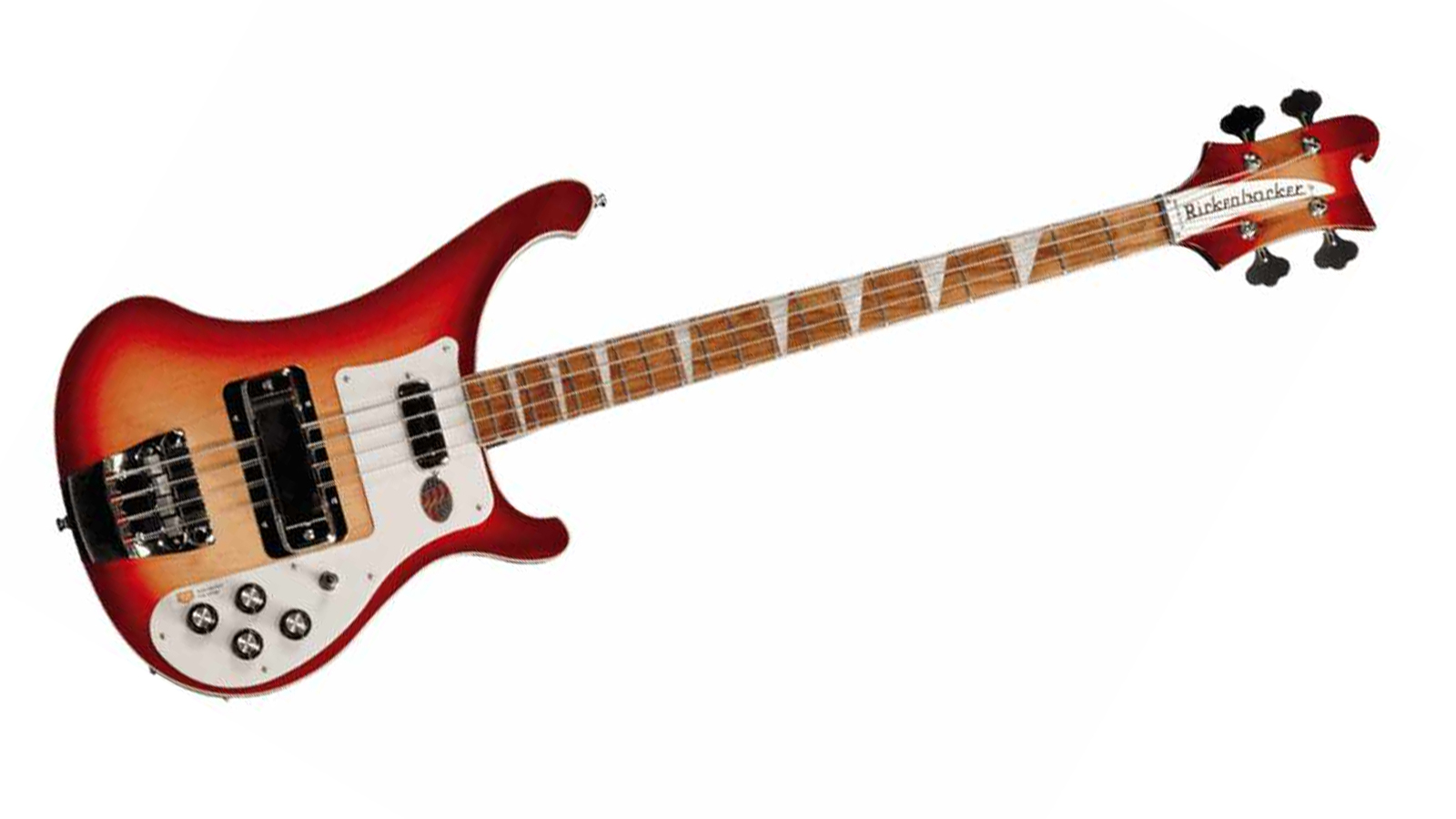
4. Rickenbacker 4003 Stereo
Our expert review:
Specifications
Reasons to buy
Reasons to avoid
The Rickenbacker 4003 is an iconic instrument that has featured on countless records due to its unmistakably thick and resonant low end, which alone makes it worth every single penny – and quite a few will be needed because this doesn’t come cheap.
Independent tone and volume controls, with a 3-way switch for the pair of Rickenbacker single-coil pickups, mean you have superb control over your sound, allowing you to roll the tone knob back and achieve laid-back grooves or crank everything up to ten and rip walls down.
The party trick? It has to be the ‘Rick-O-Sound’ stereo output, allowing you to take the output from each pickup to separate amps. Plug the bridge into something a bit more bitey and the neck into a warmer amp with a big cabinet – an Ampeg SVT and an 8x10 cab would be our suggestion – and you can create some truly insane blended tones. It’s a luxury instrument at a luxury price but should be considered by those who can afford it.
Best for beginners
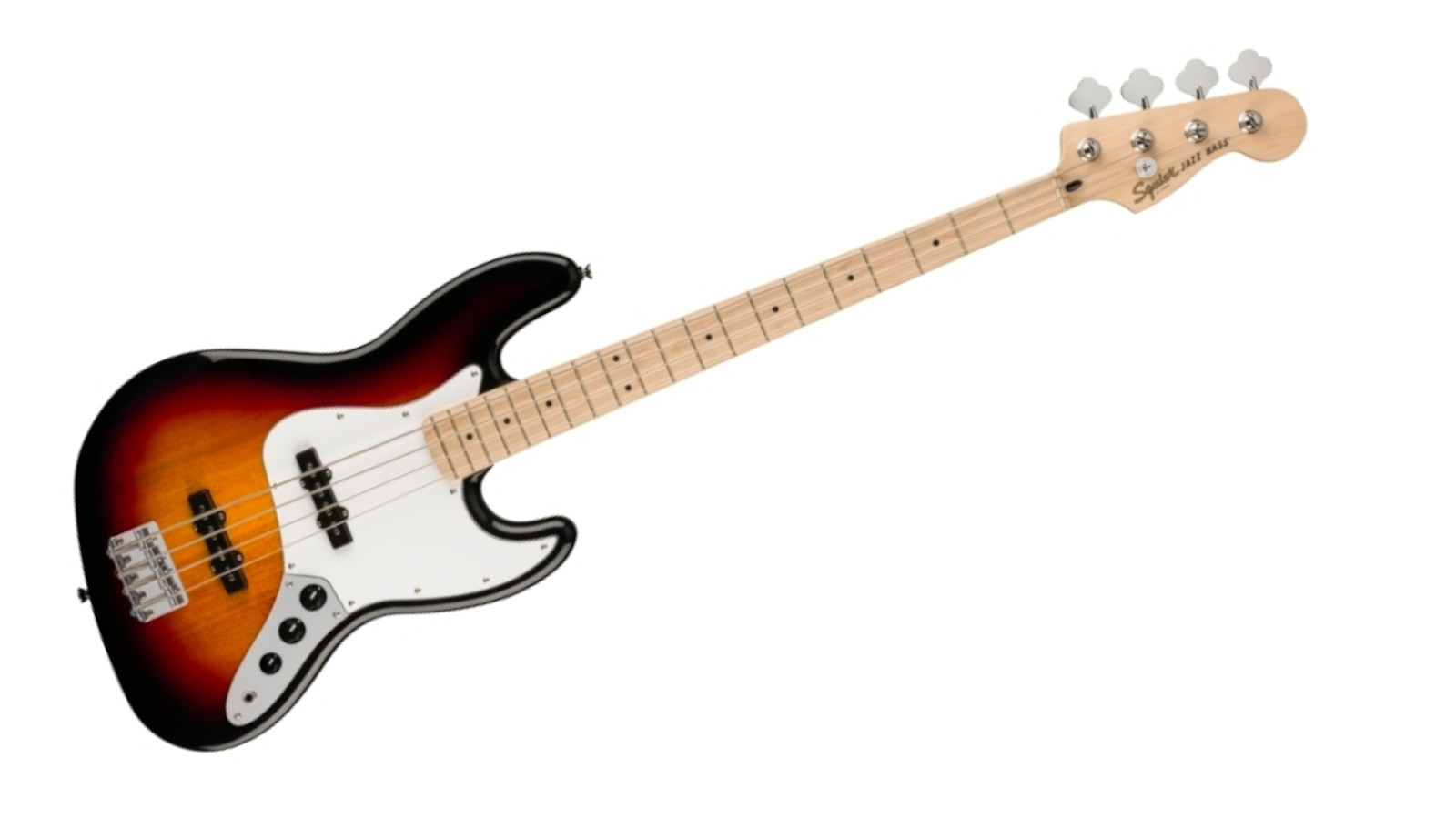
5. Squier Affinity Jazz Bass
Our expert review:
Specifications
Reasons to buy
Reasons to avoid
Despite the Affinity J Bass coming in at a modest price point and lacking in frills, its classic Fender look means it still dazzles, and if you were to have a graph of its sound quality versus price measured against comparably priced basses, it’d be off the charts. As can be expected of a Fender-family Jazz bass, its impressive versatility makes it a great instrument for a player looking for something that can do it all. For guitar players looking for an affordable bass to lay down some demos with, look no further.
The satin neck is surprisingly nice for an instrument of this price and makes it super easy to play for beginners, and even aficionados will struggle to set it apart from instruments double or triple the price. It’s the guitar I learned to play bass on and I’ve thrown it around plenty of gigs, yet it continues to surprise me just how excellent a rock bass guitar it is.
If you’re a particularly small player, or buying this for somebody younger, bear in mind that this is a full scale instrument with a pretty big body – you may want to look at short scale alternatives, such as Squier’s extremely affordable Sonic Bronco Bass.
Best under $1,000
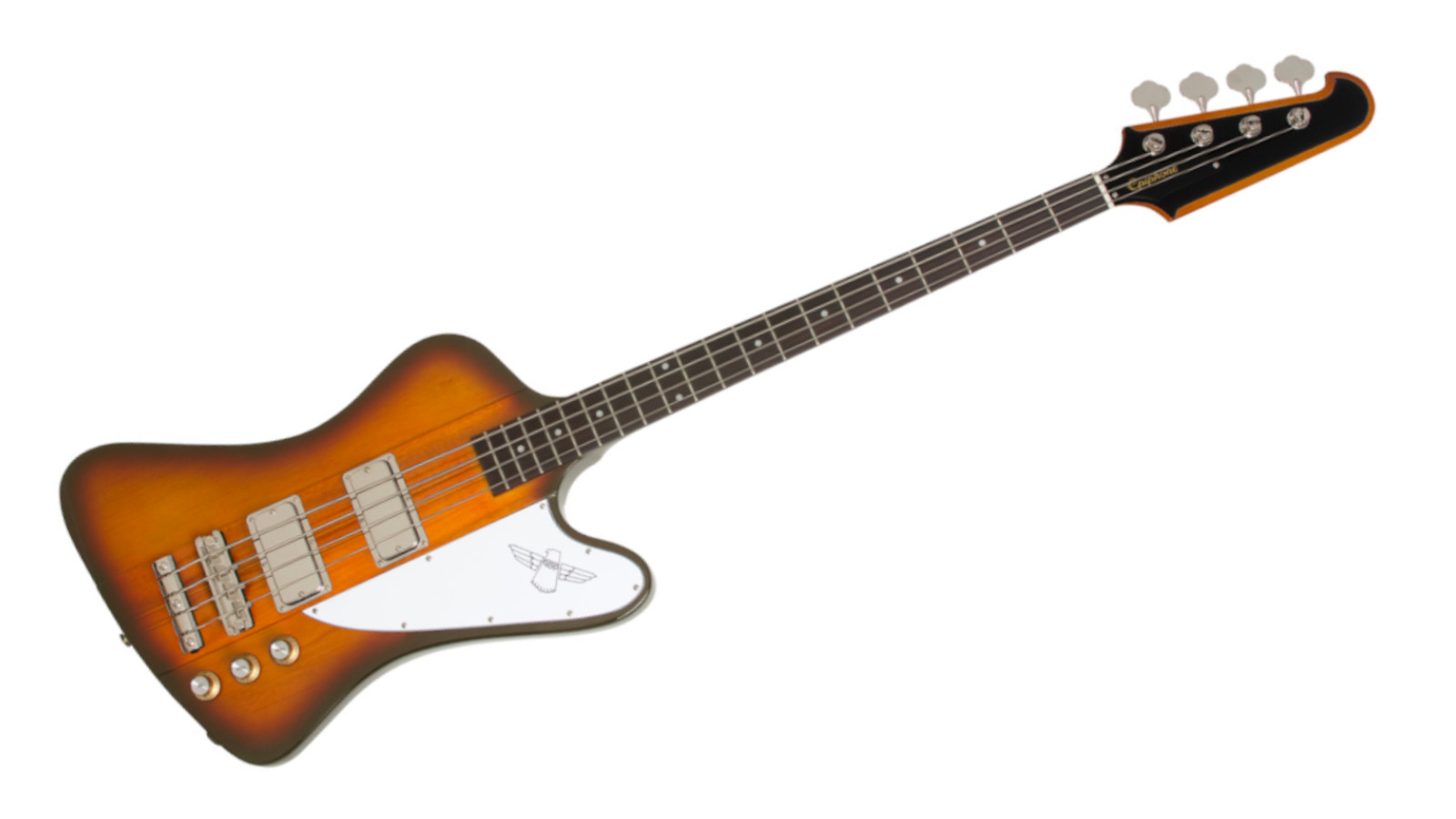
6. Epiphone Thunderbird ’60s Bass
Our expert review:
Specifications
Reasons to buy
Reasons to avoid
The Thunderbird may well be Gibson’s most iconic bass instrument ever and has been a mainstay in their catalog since launch, however they also come with a hefty Gibson price tag. As is so often the case, Epiphone have come to the rescue of those looking to get their hands on one of Gibson’s legendary shapes at a fraction of the price. And Epiphone’s Thunderbird doesn’t just look as special as Gibson’s, it sounds pretty close too. Dual humbuckers produce outrageous tones with bags of output that will happily drive an amp into overdrive when pushed.
Whilst other Epiphone Thunderbirds can be found on the new and used market for less, the ’60s is our pick of the bunch, with design cues that replicate the original versions of the Thunderbird, including adjustable tune-o-matic bridge and dual tone headstock, making it play and sound just as good as it looks.
Its classic shape is an area that can be its downfall, with the heavy neck and huge headstock meaning it tends to want to dive towards the floor, though this can be compensated against with a robust strap. You’ll also struggle to pick up a good cheap case for it, and given it’s a thing of beauty, you’ll want to invest in a hard case, which will set you back $100+.
Best Fender alternative
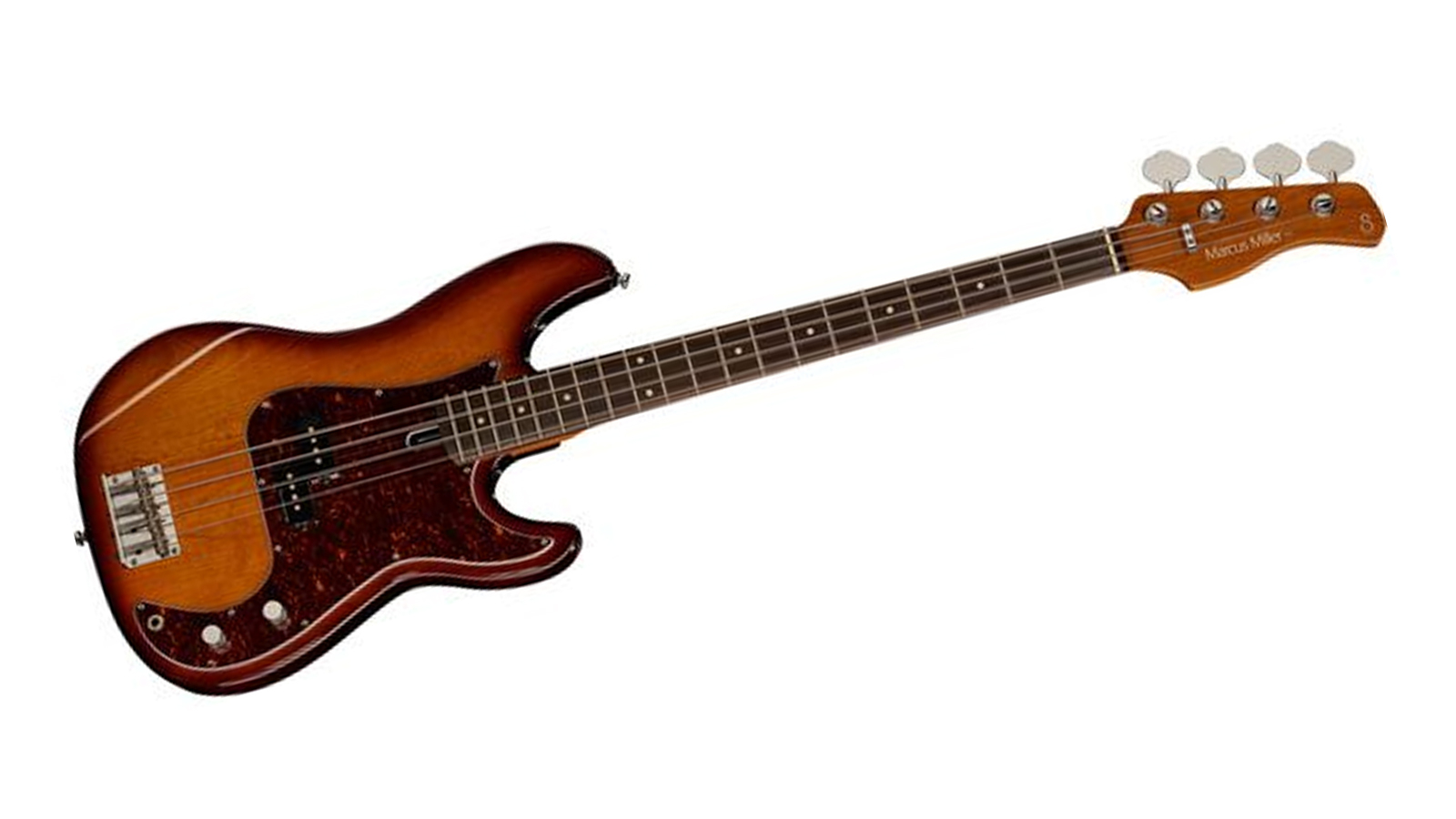
7. Sire Marcus Miller P5R
Our expert review:
Specifications
Reasons to buy
Reasons to avoid
Sire has earned a name for itself for crafting bass guitars with classic looks and great tone, at a near-unbeatable price point. They’re also great for accessibility, catering for both 4 and 5-string players, as well as those who are left-handed, all of which are available on their brilliant P5R model.
Marcus Miller is best known for his jazz and funk bass playing, but don’t think for a second that his name being attached to this bass means it isn’t just as suitable for playing rock. The P5R doesn’t just look very similar to a classic P Bass, it sounds like one too, with the ‘Marcus Vintage-Precision Revolution Pickup’ delivering excellent attack and clarity that jumps out through a congested frequency spectrum.
At this price point, the temptation of a tried-and-tested Squier may be a little too strong for many, but with details such as rolled fretboard edges, real bone nut, roasted maple neck and an all-steel bridge, the Sire P5R sits above anything in Squier’s bass range for feel and playability.
Best for modern tones
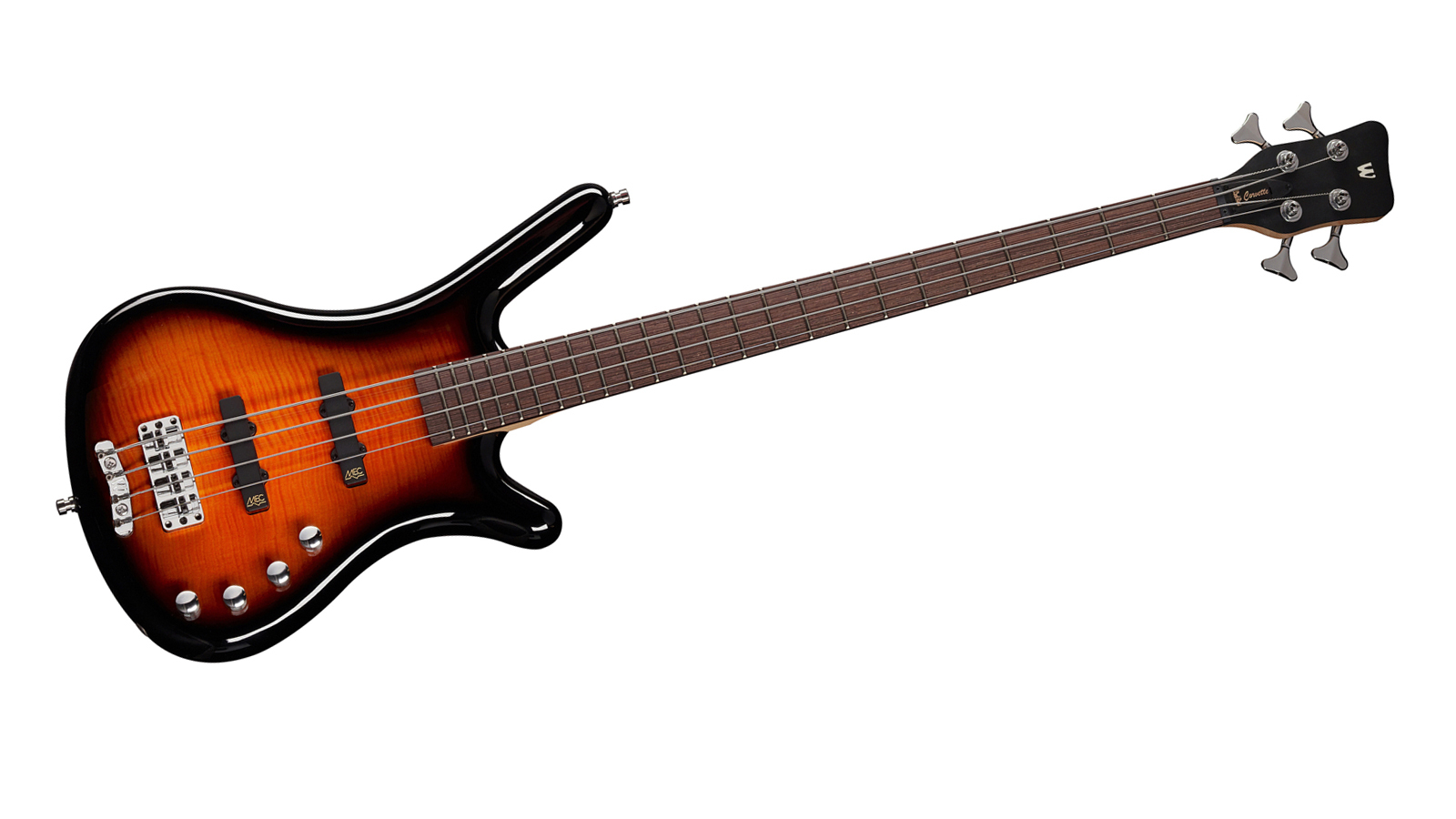
8. Warwick RockBass Corvette Classic
Our expert review:
Specifications
Reasons to buy
Reasons to avoid
Warwick is synonymous with producing high-end, modern bass guitars that are loaded with active electronics and are found on stage in the hands of wildly technical players. Its Chinese-made RockBass line offers similarly high standards at an attainable price point.
The Corvette Classic is distinguishable by its midrange growl, something that really suits playing rock music. This is courtesy of the active MEC J/J pickups, that provide plenty of punch and supreme clarity, cutting through a mix with ease. If you’re concerned about active electronics in your bass, the Corvette will quell those worries, with Warwick’s patented ‘easy access electronics compartment’ making managing battery changes straightforward.
For fans of classic bass looks, this probably won’t be a shape for you, but if you’re looking for something a bit different, the flamed maple veneer is a thing of beauty and an option not found on many ‘traditional’ rock basses.
Best on a budget

9. Orange O-Bass
Our expert review:
Specifications
Reasons to buy
Reasons to avoid
The second iteration of Orange’s O-Bass retains the affordability of its predecessor, and from the outside you’d be forgiven for thinking nothing much had changed at all, barring the headstock now being black. However, Orange has invested in better woods (African okoumé for the body and purpleheart for the fretboard) which make this a far better balanced instrument – something the original model really struggled with, as it was very neck heavy.
Harking back to the original Fender P Bass, with a slab body and one single pickup – though this has a custom wound split humbucker – the O-Bass is a perfect instrument for those who want something that really grinds, and its unique pickup positioning gives it a distinctive tone and a chunky high register.
Whilst it may be no-frills from a construction standpoint – the hardware being the main area you feel this – it looks the part and catches people’s eyes on stage. It’s also impressively affordable. If you want to stand out from the crowd, this is a great alternative to a Squier Precision Bass.
Best for guitarists
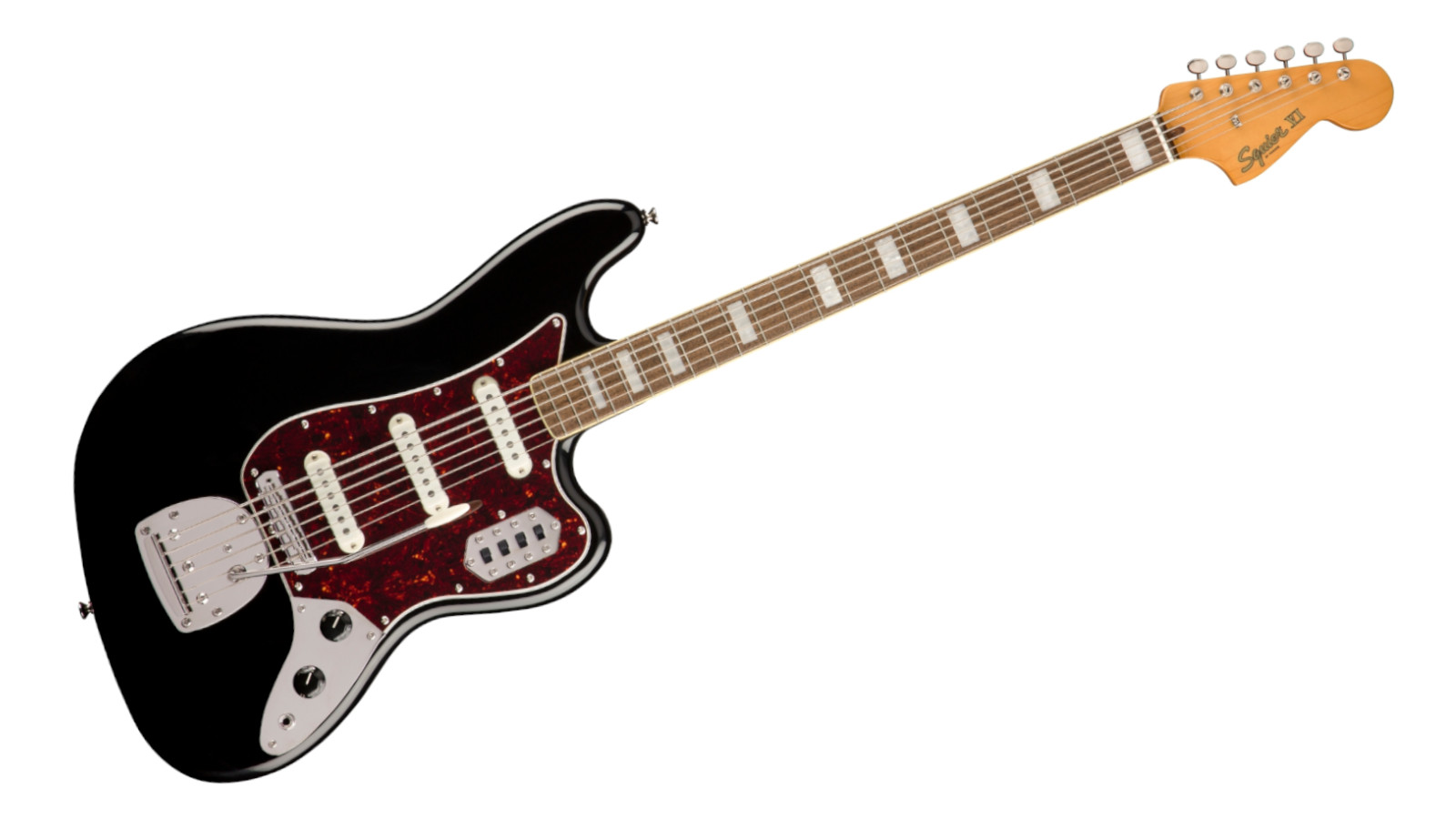
10. Squier Classic Vibe Bass VI
Our expert review:
Specifications
Reasons to buy
Reasons to avoid
Whether you consider the Classic Vibe Bass VI a true bass guitar or not is up to you, but you’ll find it in the ‘Bass’ section at any music store, so we’re including it here. The Bass VI is a 6-string instrument that is tuned a whole octave down from a traditional electric guitar, so don’t confuse it for a baritone – it offers low-end tones, but with playability closer to a standard electric guitar.
The addition of two extra high strings means it works really well for higher-register playing, particularly with overdrive and distortion pedals, that can take you into realms of filth that you would struggle to achieve on a conventional bass, though if you’re not careful it can get pretty muddy, pretty quickly, down at the lower end of the neck.
If you’re looking to get chugging sub-bass low end, this won’t hit the spot, but for experimental rock bassists, this is a really unique option that opens up so many tonal possibilities you would struggle to replicate on a ‘normal’ bass guitar. Equally, for those who perform solo or in a two-piece with a drummer, this is a great option to bridge the gap between electric and bass – split your output into a bass amp and a guitar amp with plenty of drive and this thing wails!
Buying advice
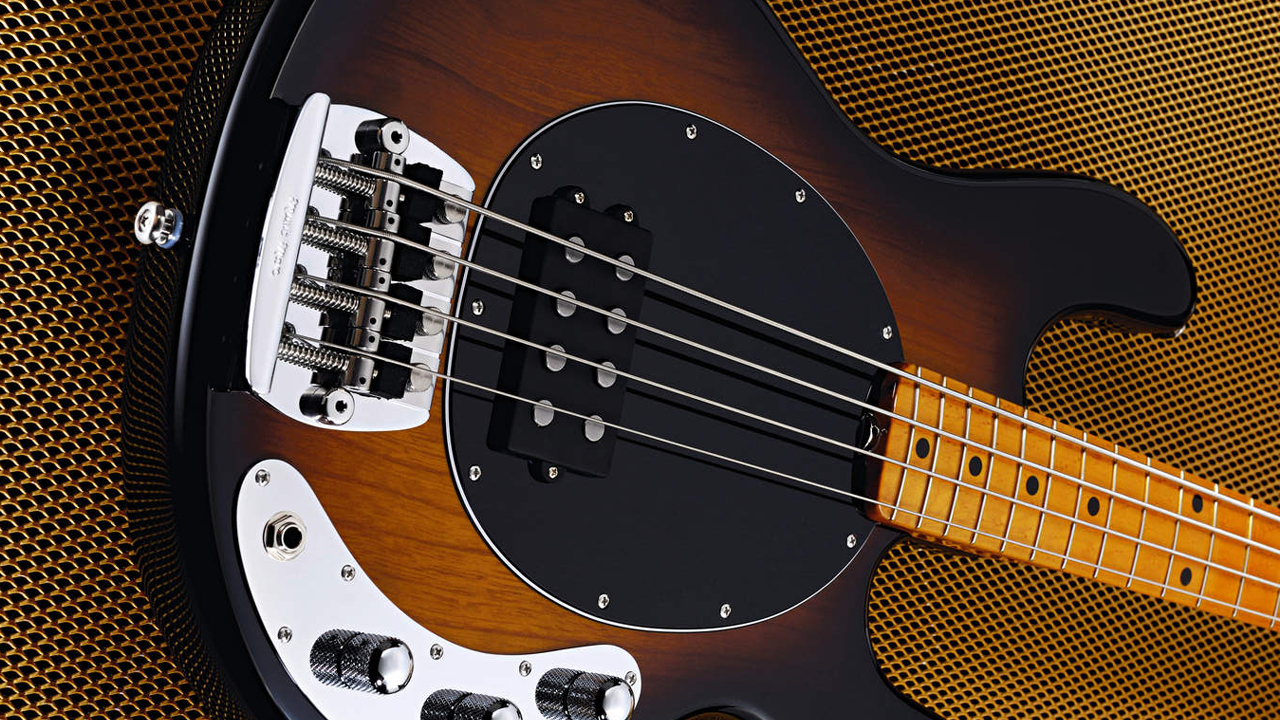
What makes a bass guitar good for rock?
It’s no coincidence that rock music took the world by storm when the electric bass guitar appeared. The driving low end of an electric bass broke sonic barriers for the genre and kickstarted a revolution. But given that rock stemmed from R&B, a good rock bass should be just as comfortable rolling back the tone and laying down some bluesy grooves as it is sitting amidst thrashing drums and a wall of guitars.
‘Rock’ in itself can be a catch-all term for an incredibly broad genre and the needs of a hard rock band would differ greatly from a traditional rock‘n’roll band. Regardless of specific sub-genre, the best rock basses have a good tonal range (as low as 40Hz and with harmonics up to 5kHz), including some kind of on-board tone shaping system – be that a simple tone knob (every good bass should have this) or more complex onboard EQs, like that featured on the MusicMan Stingray, both of which allow you some control over your tone on the fly. The goal should always be a controlled bottom end that works symbiotically with a kick drum. Think of any great rock band; their rhythm section will be perfectly fused – John Bonham and John Paul Jones, Neil Peart and Geddy Lee, or even Chad Smith and Flea – this isn’t just down to the players’ ability to be perfectly in time with each other, but also the sympathetic frequencies of their respective instruments.
Low frequencies aren’t the only ones that are key for rock music, which often has a congested frequency spectrum thanks to those pesky electric guitarists, who have a tendency to dominate most mixes. The best rock basses should have the tonal capabilities to poke through even dense mixes with slightly boosted frequencies of around 800Hz-1kHz being key to being heard. Of course, this is in no small part down to your amp too, so it's worth checking out our list of the best bass amps.
Fingers? Picking? Or slappin’ da bass?
You can trust Guitar World
To this day, bass players will argue about the best way of playing the bass – fingers or pick, or slap? The fact is that a good bass should be able to be played any way you like, even if you are changing playing style mid-song. We recommend always getting a good set-up and restring on your instrument after purchasing it so you know it is optimized for your style.
If you’re a Flea disciple and have a tendency to break into slapping bass solos midway through a rock epic, you may want to lower the action a bit, which will make the slaps much cleaner and won’t leave your slapping hand bruised to bits, however you may experience a bit of fret buzz.
Still not sure? We explore the pros and cons of playing with fingers or pick in this feature.
P vs J basses
P and J. One letter ‘B’ away from a tasty sandwich? Or the two most iconic letters in rock bass history? In this instance, we want to discuss the latter.
P, standing for ‘Precision’, and J, standing for ‘Jazz’, are two styles of bass developed by Fender in the ’50s and ’60s, that established the electric bass guitar as a core part of popular music. The P Bass first arrived in 1951 and changed the entire bass – and rock music – world irrevocably. Originally a slab-bodied, single (split) pickup workhorse, with a unique (at the time) 34” scale-length, the P Bass was a monumental change from the basses that preceded it, which were typically uprights. Much of this design has remained largely the same, with minor revisions made throughout the 1950s, during which time the P Bass became the quintessential sound of rock‘n’roll’s low end.
After enjoying a period of growth in popularity during the ’50s for its P Bass, in 1960 Fender decided to add another bass guitar to its roster – the Jazz Bass. Seen by some as a more premium instrument, the J Bass featured two pickups, which made it more tonally flexible, whilst its Jazzmaster-style body also caught the eye. Fortunately, the J Bass didn’t come in and blow the P Bass out of the water, both grew together as did the rock genre, with players favoring one over the other based on their individual needs.
The P Bass has an unmistakable, tight-attack, that really cuts through a rock mix. Its overwound split pickup is perfect for those looking to add a little hair to their sound, as it tends to run hotter than J Basses. This makes it great for funk music, as well as rock.
The J Bass can be tamed, and rolling back the tone and volume can give you thick, warm, almost double-bass tones that are more suited to its namesake, jazz, as well as soul and R&B. Having two pickups, however, means you can blend-in both to create really well defined notes, which has seen even the heaviest rockers experiment with J Basses.
So which is better for rock music? Either! They both have unique characteristics, and while a J Bass may have slightly more versatility with its two pickups, the P Bass is one of the forefathers of rock‘n’roll and its tonal range is perfect for rock music. They both have ridiculous credentials and both have featured across countless rock records. Frankly, deciding between the two is more than a little tough… even Fender knows that, which is why PJ bass instruments – featuring the best of both – are such popular fixtures in their catalog. So you don’t have to choose!
Should I get an active bass for rock?
You sure could, and it’ll probably be awesome, but don’t feel you need to. Active basses feature on-board power provided by a battery that means they can offer higher output from their pickups, which can be useful for the heaviest rock.
For those with a passive bass guitar already, it’s certainly something to consider adding to your arsenal, but for newbies who are looking to get into rock bass for the first time, you will be more than fine with a passive instrument. If you do like the idea of higher output, that may provide more ‘boom’ to your sound or drive your amp into overdrive, consider humbucking bass guitars, such as Epiphone’s Thunderbird bass, which will naturally produce higher output.
How we choose
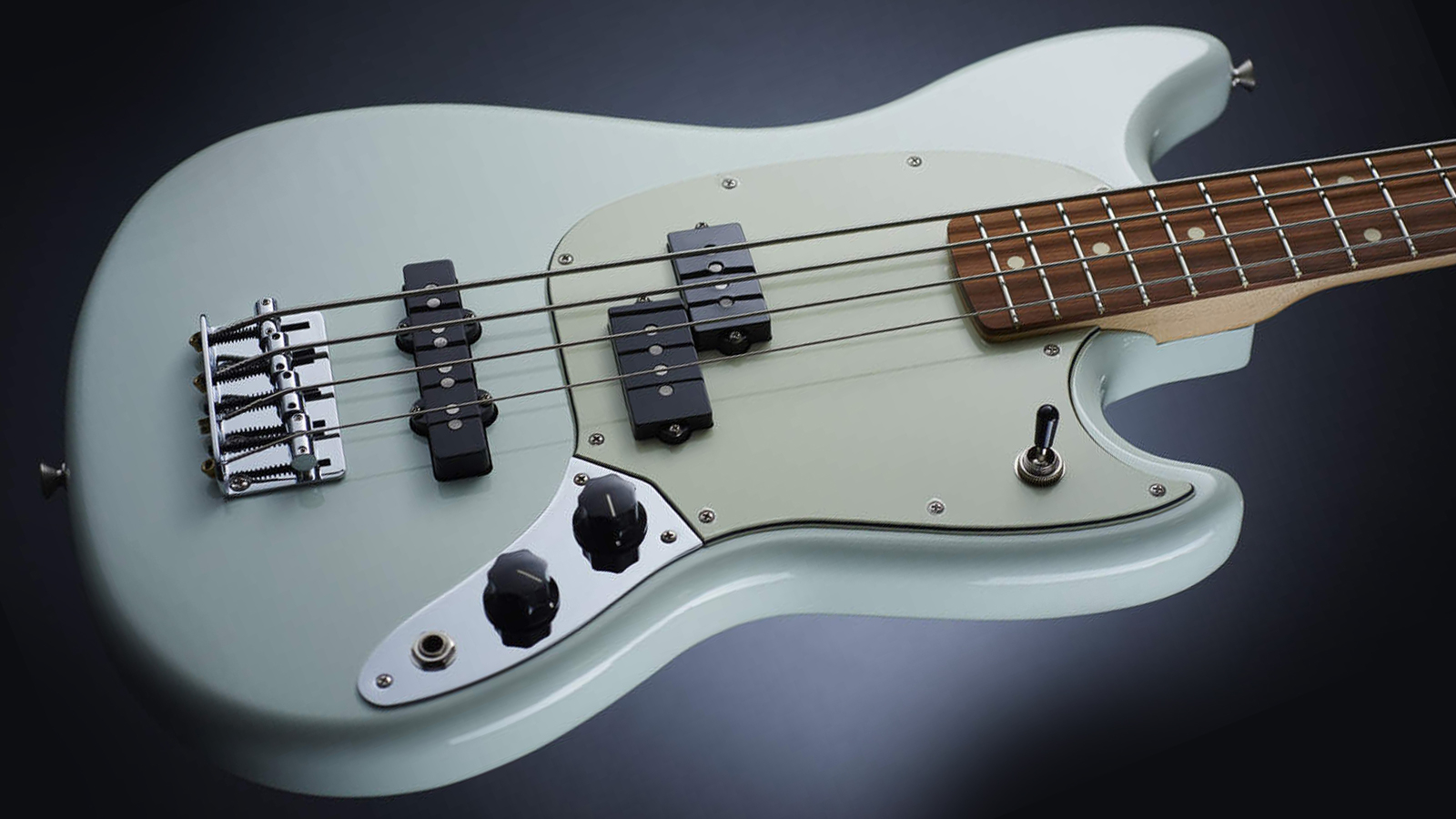
Okay, we are very aware that bass guitars are very subjective - and things get even more complicated when you start digging into genre-specific basses. That said, no matter our personal preference, there are a few key criteria that a bass guitar must meet for us to consider recommending it as one of the best bass guitars for rock.
We choose to test products based on a company’s popularity and reputation, as well as our own experiences and expertise.
For us, a bass must deliver on build quality, playability and tone - and for rock music, we need the assertive tone that'll ensure the bass is heard over the noise of the pounding drums and loud guitar.
Read more about how we find the best bass guitars for our buyer’s guides and exactly how we test each instrument.
Related buyer's guides
- Match your new guitar with one of the best bass amps
- On a budget? Here's our list of the best bass guitars under $500
- Save cash on the best electric guitars under $500
- Plug in with one of the best guitar cables
Get The Pick Newsletter
All the latest guitar news, interviews, lessons, reviews, deals and more, direct to your inbox!
Connor is a contributor to Guitar World and MusicRadar. Having been a guitarist since the age of 10, he's played bass and guitar in bands across the South West of England. He has a background in audio engineering, having worked in some of the UK’s best studios including Rockfield and Invada, and has a passion for recording guitar. He is always keen to discover the greatest gear for capturing tone, be that microphones, audio interfaces or cab simulators.
“An esoteric boutique vibe, superb ergonomics and a powerful, unique preamp – Tobias is back”: Tobias Growler IV review
“Affordable versions of the three best basses I've ever held in my hands”: Sterling by Music Man completes its trilogy of Joe Dart signature models with a trio of made-to-order basses that cost less than $500

